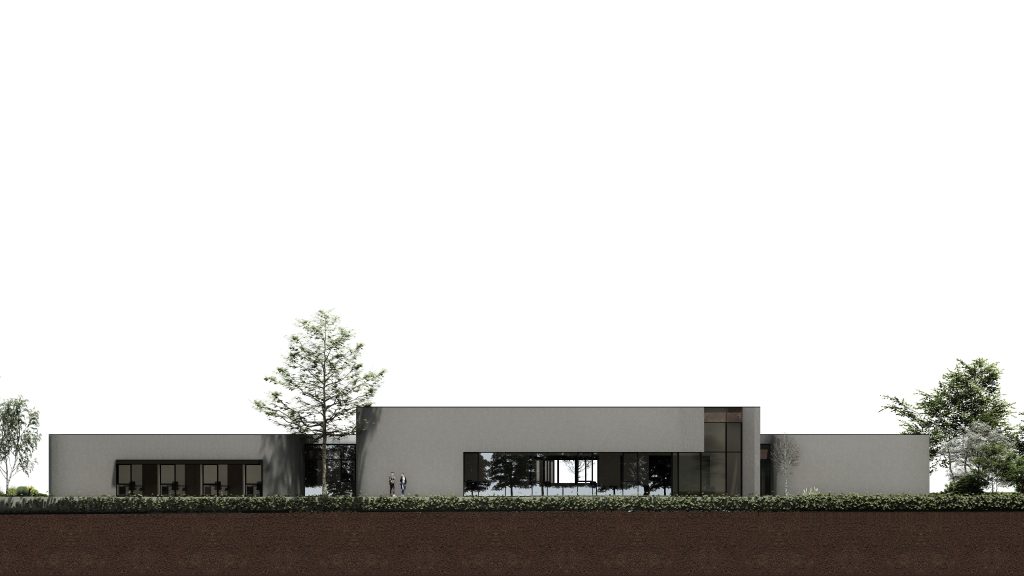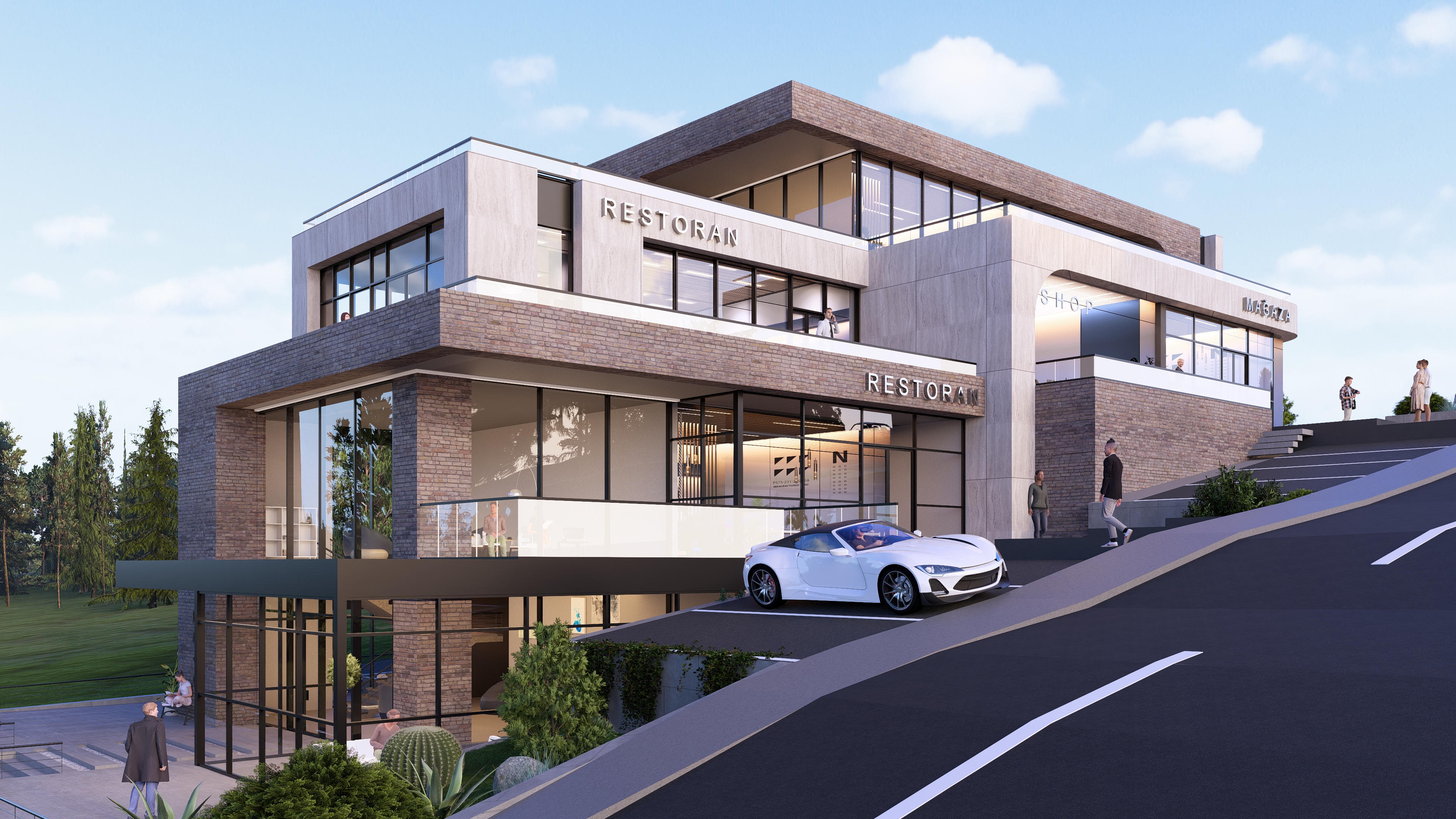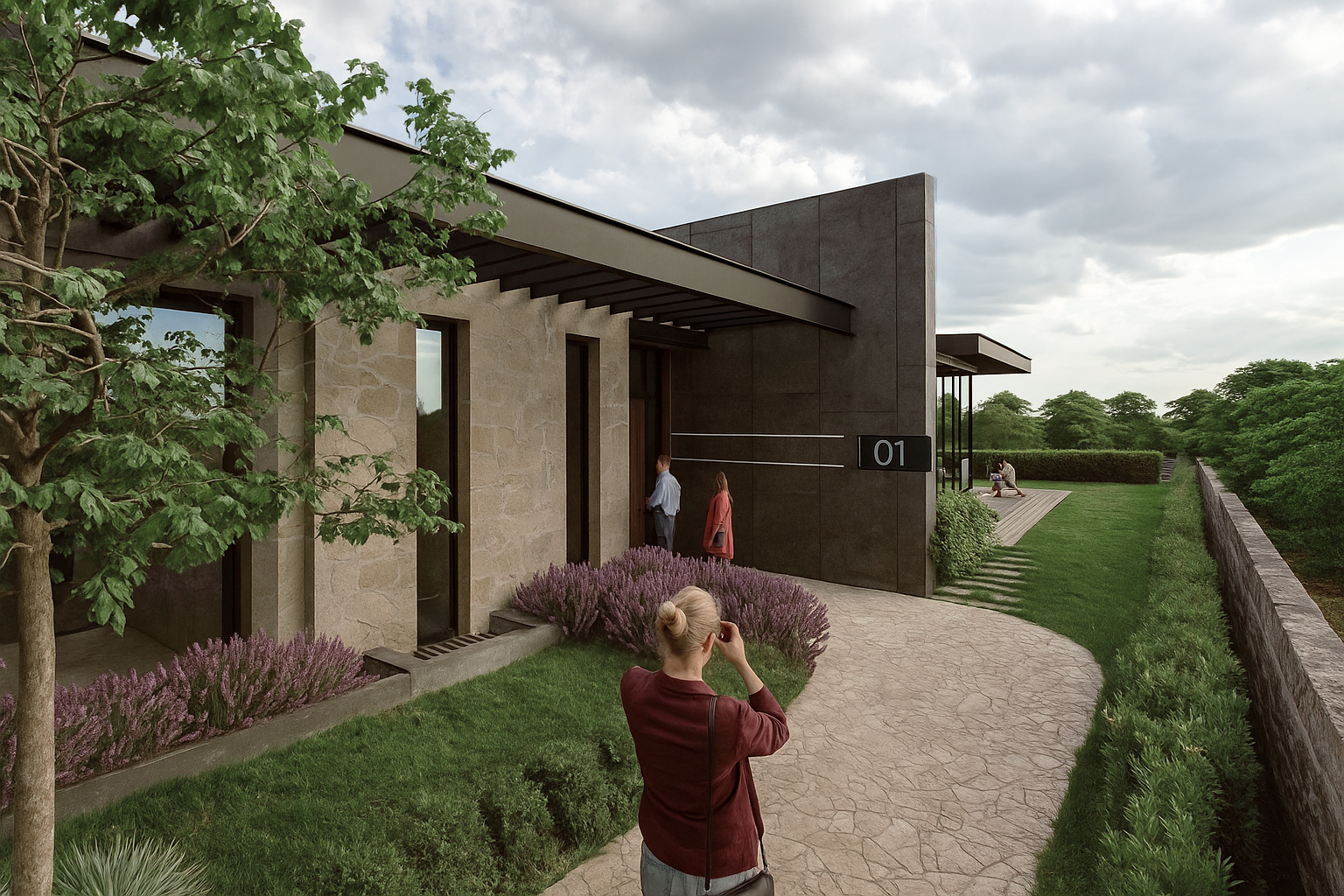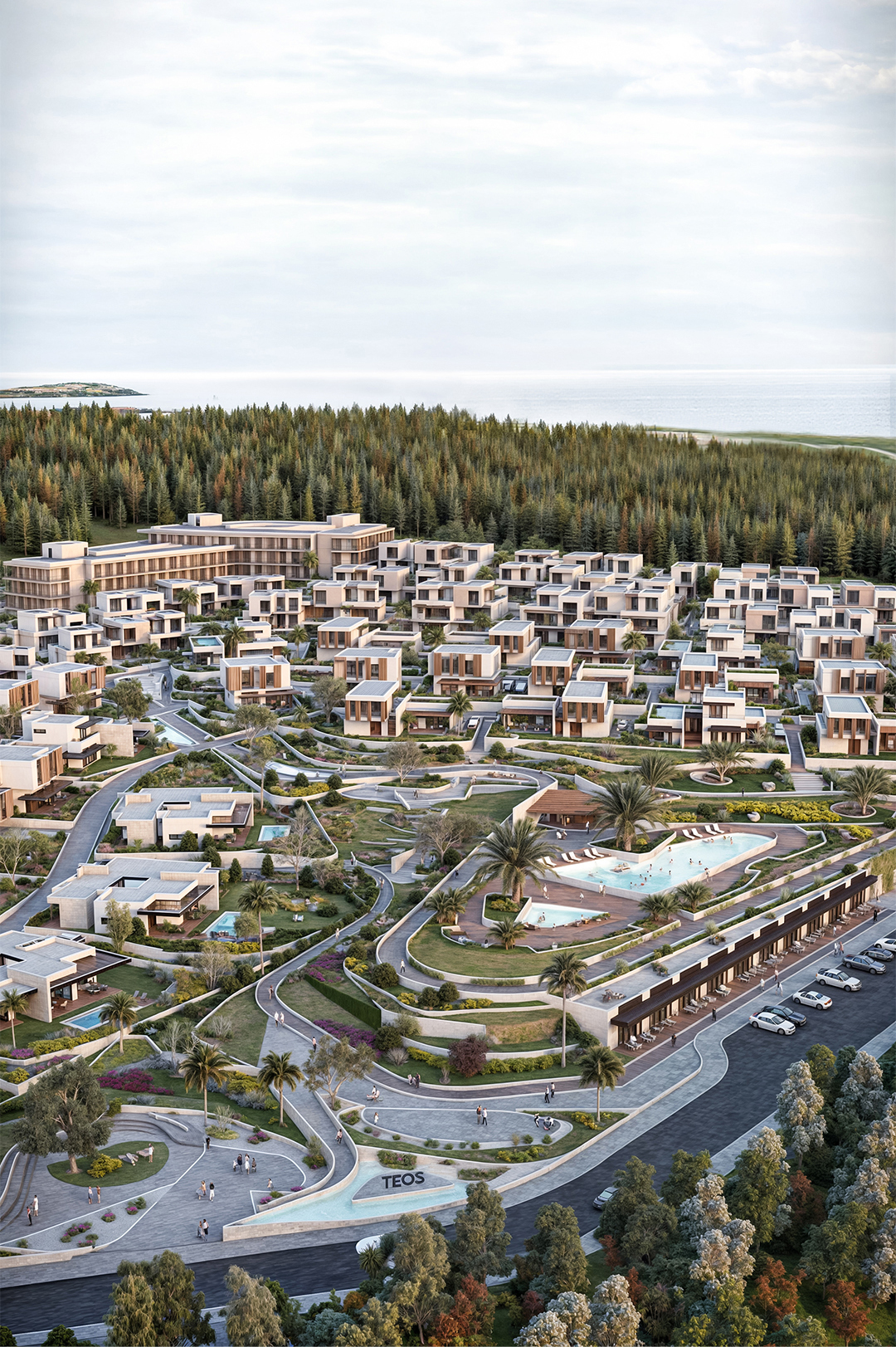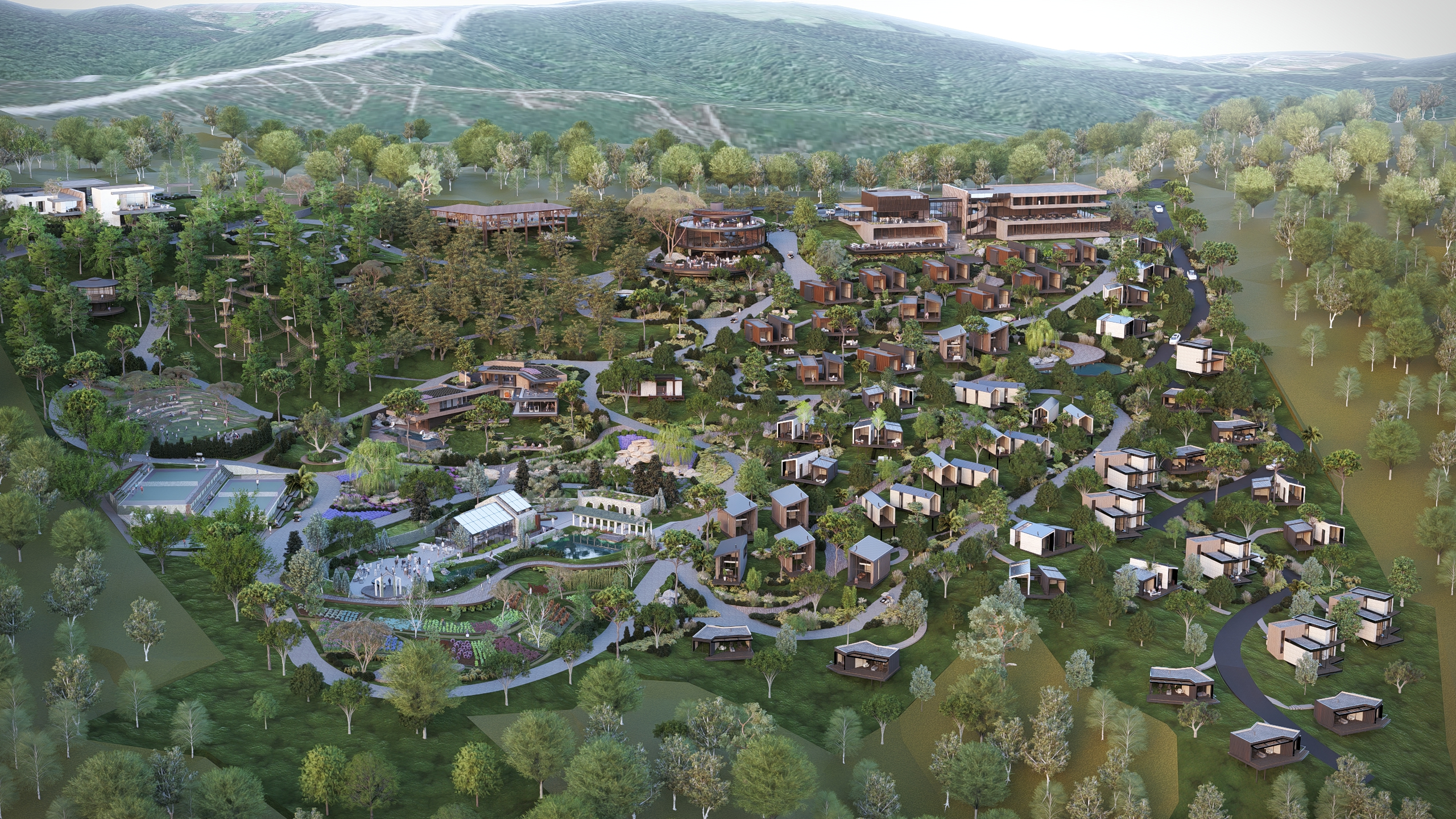Velux Plus Showroom
Velux Plus is a continuation of the Velux project located on Istanbul Road. Comprising 11 blocks, it is a mixed-use development that has become an urban landmark with its modern and recreational spaces.
Project Info
TYPOLOGY
Showroom
STATUS
Concept
YEAR
2024
CLIENT
A1 Group
AREA
840
LOCATION
Yenimahalle, Ankara
Project Info
TYPOLOGY
Showroom
STATUS
Concept
YEAR
2024
CLIENT
A1 Group
AREA
840
LOCATION
Yenimahalle, Ankara
Velux Plus Showroom
The Velux Plus Sales Office is shaped by a design inspired by the site strategy of the architectural project and references the dynamics of an open-air shopping mall. The layout is based on an open-plan concept that emphasizes spatial continuity and visual transparency, offering a distinctive resolution of transitions between interior and exterior spaces. The design maximizes user interaction with the space, presenting a refined combination of modern architectural language and functional design.
In the spatial layout, different functions such as the reception and screening area, sales and presentation space, administrative units, and sample apartment have been designed as separate volumes, creating spatial diversity. These independent masses are connected by a corridor dominated by transparent glass surfaces, ensuring continuous visual connection within the interior while maximizing natural light permeability. This arrangement brings a dynamic organization to the space, both aesthetically and functionally.
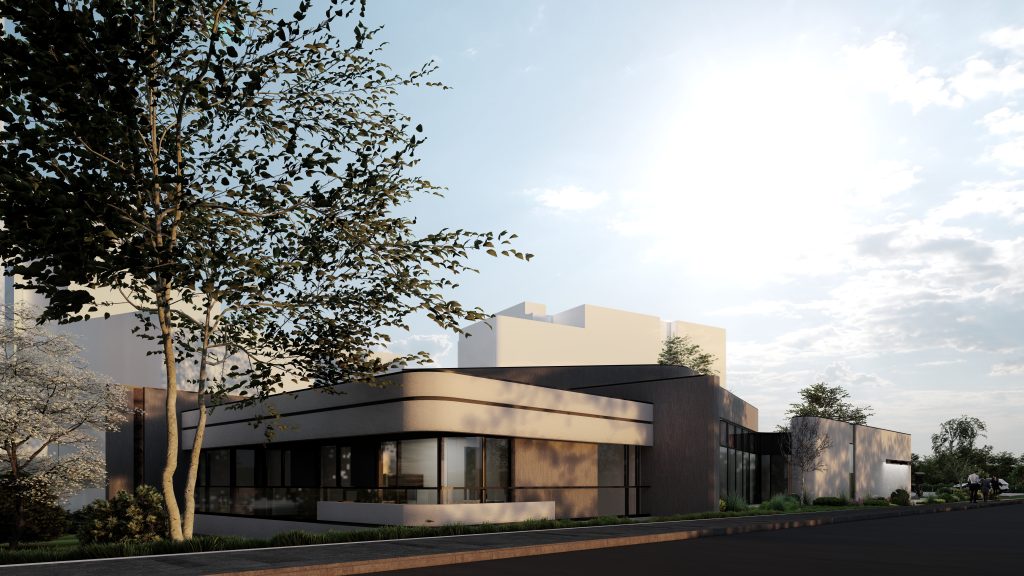
The slits designed on the plan not only enhance the interaction between interior and exterior spaces, but also enable the integration of separate volumes, establishing spatial continuity while emphasizing the volumetric language of the building. These slits are accentuated on the façade with transparent glass, increasing interior visibility and adding visual dynamism to the façade, while also allowing the building to be perceived from different angles.
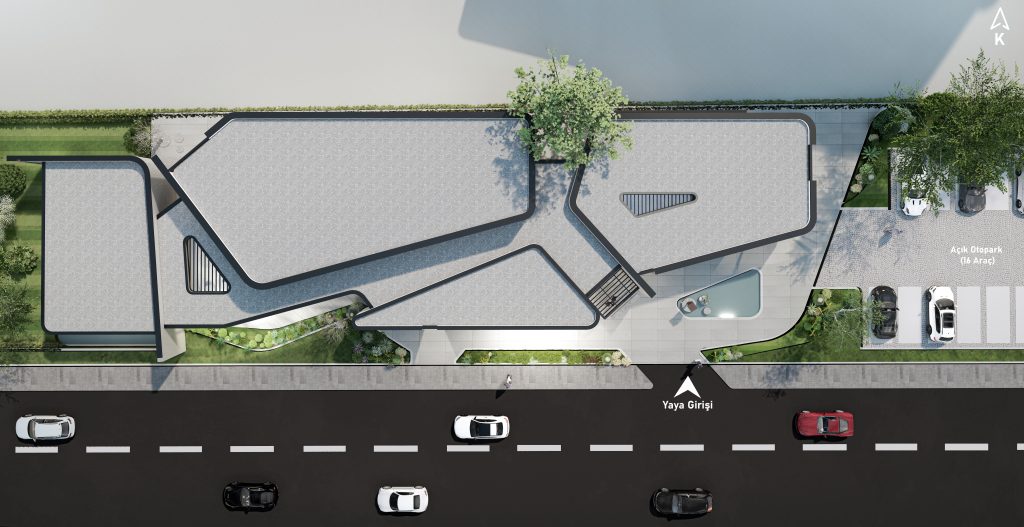
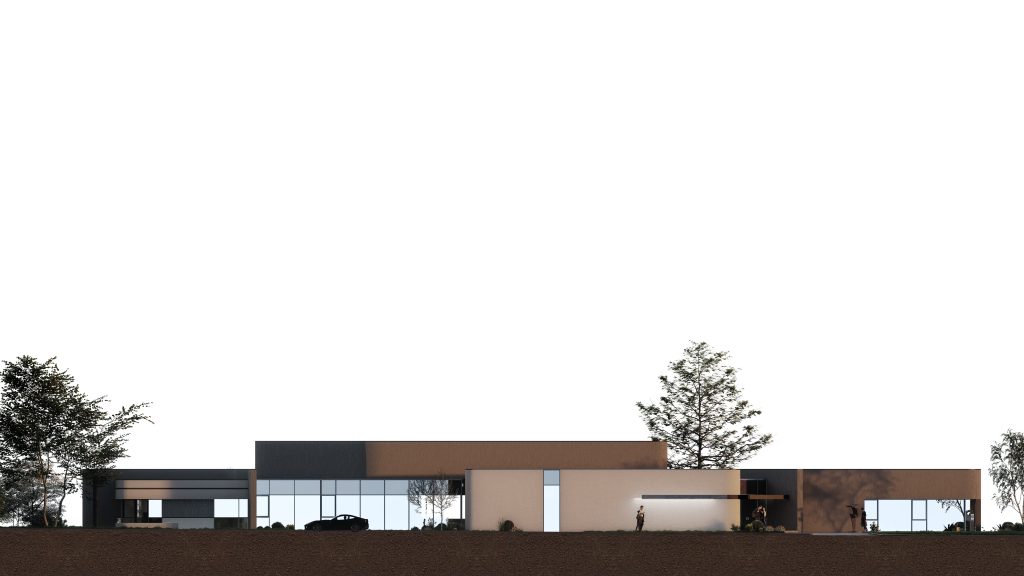
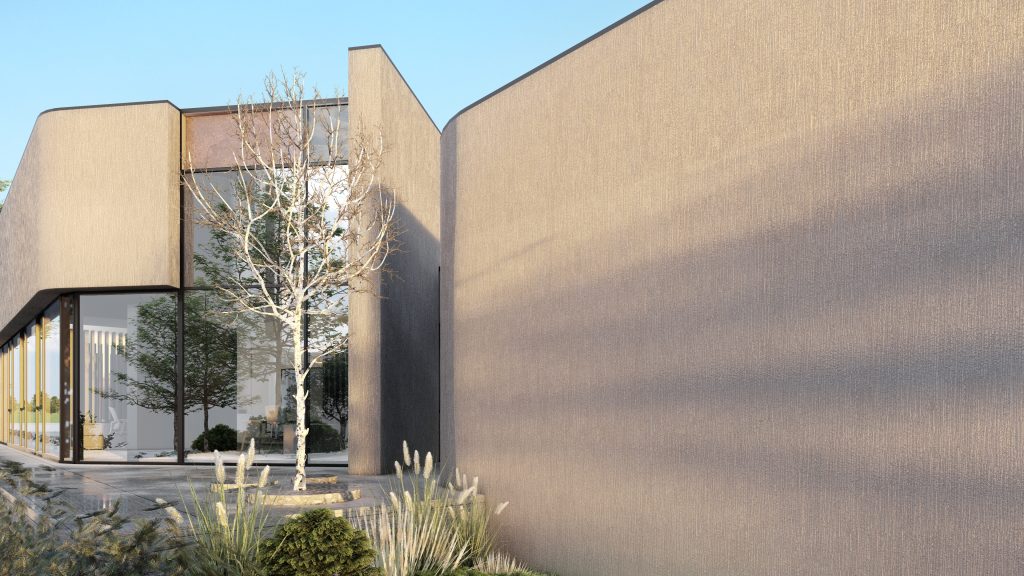
When viewed from the outside, these slits evoke a sense of continuous movement and transformation on the façade, enriching the texture of the volume through the play of light and shadow. In doing so, the building not only establishes a strong spatial relationship within its interior, but also forms an organic connection with its surroundings, contributing to its environmental context.
